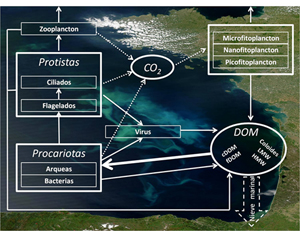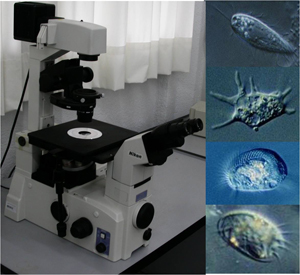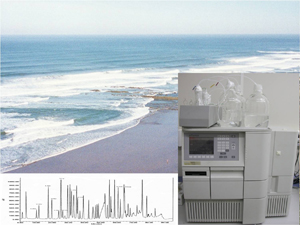Research Lines
Diversity and Function of Prokaryotic Communities in the Ocean

We are interested in the interrelationships among composition, diversity and function of the prokaryotic community in both the open ocean and coastal waters. We study several characteristics of the bacterioplanktonic communities such as phylogenetic composition, biodiversity and abundance, as well as physiological processes including enzymatic activities, consumption of organic compounds, growth rates, respiration rates and growth efficiency. Thus, we obtain information about the functioning of the largest fraction of organic carbon alive in the ocean. The respiration of organic material to CO2 and the growth efficiency are areas of particular interest, because bacteria are primarily responsible for the release of CO2, which is the main greenhouse gas, into the atmosphere. We have also studied the functional distinction between bacteria attached to sinking organic particles and free-living bacteria, given the importance of the export of carbon from the surface to the seafloor. This line of research has been approached by using both experimental and field work with seawater samples from the Western Mediterranean Sea, the Eastern Bay of Biscay, and more recently from the Atlantic, Indian and Pacific Oceans.
Protozoan Interrelationships predator-prey bacteria in aquatic systems

We are interested in the interrelationships between two trophic levels of the microbial food web in aquatic systems, the protozoa (predator) and the bacteria (prey). We study the interrelation in natural communities as well as in species which can be considered as study models, while our approach is both field work in freshwater and marine ecosystems, and laboratory experiments using microcosms. One area of interest has been to determine the role of bacterivorous protozoa associated to aggregates, since the particles are areas of high microbial activity in the water column. Thus, we have analyzed the colonization and succession of species of protozoa in aggregates, quantifying grazing rates of bacteria attached to particles by nanoflagellates for the first time. Another important aspect in this field of work has been the study of selective grazing shown by protozoa towards their bacterial prey, and in particular, the study of the role of chemical cues in the predator-prey relationship. Finally, we have studied the mechanisms of resistance developed by bacteria to predation, since as much as 50% of the bacterial biomass in a situation of grazing pressure cannot be consumed by the bacterivorous protozoa.
Chemical Composition and Microbial Transformation of Organic Material in the Ocean

We want to know the chemical composition of dissolved organic material present in seawater, understand its meaning, and analyze how the heterotrophic bacterioplankton transforms the organic material. We have studied the amino acid composition of seawater and, more specifically, their enantiomeric forms L-and D-, since they have been suggested to provide information about the level of biodegradability of organic matter. The results obtained in the DHARMA cruise, conducted in Southern Ocean waters, contributed to the development of research on the accumulation, disappearance, consumption by bacterioplankton and the seasonal variability of the D- and L-enantiomeric forms of the amino acids in coastal waters of Eastern Cantabrian Sea. Thus, we have observed that bacteria release significant amounts of D-amino acids during growth, possibly due to the synthesis and reorganization of the bacterial wall. We have also found that D-combined amino acids accumulate in the medium and their concentration can indicate the level of degradation of oceanic organic matter, which is relevant to understand the carbon cycle in the ocean.
